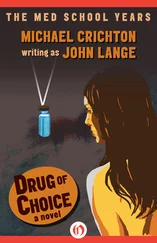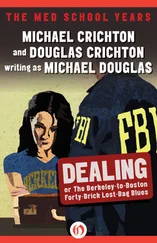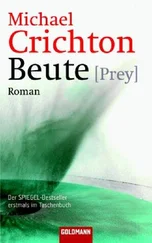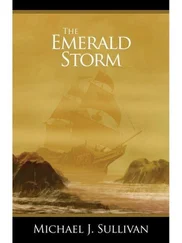Michael Crichton - The Andromeda Strain
Здесь есть возможность читать онлайн «Michael Crichton - The Andromeda Strain» весь текст электронной книги совершенно бесплатно (целиком полную версию без сокращений). В некоторых случаях можно слушать аудио, скачать через торрент в формате fb2 и присутствует краткое содержание. Жанр: Детская проза, на английском языке. Описание произведения, (предисловие) а так же отзывы посетителей доступны на портале библиотеки ЛибКат.
- Название:The Andromeda Strain
- Автор:
- Жанр:
- Год:неизвестен
- ISBN:нет данных
- Рейтинг книги:5 / 5. Голосов: 1
-
Избранное:Добавить в избранное
- Отзывы:
-
Ваша оценка:
- 100
- 1
- 2
- 3
- 4
- 5
The Andromeda Strain: краткое содержание, описание и аннотация
Предлагаем к чтению аннотацию, описание, краткое содержание или предисловие (зависит от того, что написал сам автор книги «The Andromeda Strain»). Если вы не нашли необходимую информацию о книге — напишите в комментариях, мы постараемся отыскать её.
The Andromeda Strain — читать онлайн бесплатно полную книгу (весь текст) целиком
Ниже представлен текст книги, разбитый по страницам. Система сохранения места последней прочитанной страницы, позволяет с удобством читать онлайн бесплатно книгу «The Andromeda Strain», без необходимости каждый раз заново искать на чём Вы остановились. Поставьте закладку, и сможете в любой момент перейти на страницу, на которой закончили чтение.
Интервал:
Закладка:
For a moment, he tried to imagine life without proteins. It was almost impossible: on earth, proteins were part of the cell wall, and comprised all the enzymes known to man. And life without enzymes? Was that possible?
He recalled the remark of George Thompson, the British biochemist, who had called enzymes "the matchmakers of life." It was true; enzymes acted as catalysts for all chemical reactions, by providing a surface for two molecules to come together and react upon. There were hundreds of thousands, perhaps millions, of enzymes, each existing solely to aid a single chemical reaction. Without enzymes, there could be no chemical reactions.
Without chemical reactions, there could be no life.
Or could there?
It was a long-standing problem. Early in planning Wildfire, the question had been posed: How do you study a form of life totally unlike any you know? How would you even know it was alive?
This was not an academic matter. Biology, as George Wald had said, was a unique science because it could not define its subject matter. Nobody had a definition for life. Nobody knew what it was, really. The old definitions- an organism that showed ingestion, excretion, metabolism, reproduction, and so on- were worthless. One could always find exceptions.
The group had finally concluded that energy conversion was the hallmark of life. All living organisms in some way took in energy- as food, or sunlight- and converted it to another form of energy, and put it to use. (Viruses were the exception to this rule, but the group was prepared to define viruses as nonliving.)
For the next meeting, Leavitt was asked to prepare a rebuttal to the definition. He pondered it for a week, and returned with three objects: a swatch of black cloth, a watch, and a piece of granite. He set them down before the group and said, "Gentleman, I give you three living things."
He then challenged the team to prove that they were not living. He placed the black cloth in the sunlight; it became warm. This, he announced, was an example of energy conversion-radiant energy to heat.
It was objected that this was merely passive energy absorption, not conversion. It was also objected that the conversion, if it could be called that, was not purposeful. It served no function.
"How do you know it is not purposeful?" Leavitt had demanded.
They then turned to the watch. Leavitt pointed to the radium dial, which glowed in the dark. Decay was taking place, and light was being produced.
The men argued that this was merely release of potential energy held in unstable electron levels. But there was growing confusion; Leavitt was making his point.
Finally, they came to the granite. "This is alive," Leavitt said. "It is living, breathing, walking, and talking. Only we cannot see it, because it is happening too slowly. Rock has a lifespan of three billion years. We have a lifespan of sixty or seventy years. We cannot see what is happening to this rock for the same reason that we cannot make out the tune on a record being played at the rate of one revolution every century. And the rock, for its part, is not even aware of our existence because we are alive for only a brief instant of its lifespan. To it, we are like flashes in the dark."
He held up his watch.
His point was clear enough, and they revised their thinking in one important respect. They conceded that it was possible that they might not be able to analyze certain life forms. It was possible that they might not be able to make the slightest headway, the least beginning, in such an analysis.
But Leavitt's concerns extended beyond this, to the general problem of action in uncertainty. He recalled reading Talbert Gregson's "Planning the Unplanned" with close attention, poring over the complex mathematical models the author had devised to analyze the problem. It was Gregson's conviction that:
All decisions involving uncertainty fall within two distinct categories- those with contingencies, and those without. The latter are distinctly more difficult to deal with.
Most decisions, and nearly all human interaction, can be incorporated into a contingencies model. For example, a President may start a war, a man may sell his business, or divorce his wife. Such an action will produce a reaction; the number of reactions is infinite but the number of probable reactions is manageably small. Before making a decision, an individual can predict various reactions, and he can assess his original, or primary-mode, decision more effectively.
But there is also a category which cannot be analyzed by contingencies. This category involves events and situations which are absolutely unpredictable, not merely disasters of all sorts, but those also including rare moments Of discovery and insight, such as those which produced the laser, or penicillin. Because these moments are unpredictable, they cannot be planned for in any logical manner. The mathematics are wholly unsatisfactory.
We may only take comfort in the fact that such situations, for ill or for good, are exceedingly rare.
Jeremy Stone, working with infinite patience, took a flake of the green material and dropped it into molten plastic. The plastic was the size and shape of a medicine capsule. He waited until the flake was firmly imbedded, and poured more plastic over it. He then transferred the plastic pill to the curing room.
Stone envied the others their mechanized routines. The preparation of samples for electron microscopy was still a delicate task requiring skilled human hands; the preparation of a good sample was as demanding a, craft as that ever practiced by an artisan- and took almost as long to learn. Stone had worked for five years before he became proficient at it.
The plastic was cured in a special high-speed processing unit, but it would still take five hours to harden to proper consistency. The curing room would maintain a constant temperature of 61 deg C. with a relative humidity of 10 per cent.
Once the plastic was hardened, he would scrape it away, and then flake off a small bit of green with a microtome. This would go into the electron microscope. The flake would have to be of the right thickness and size, a small round shaving 1,500 angstroms in depth, no more.
Only then could he look at the green stuff, whatever it was, at sixty thousand diameters magnification.
That, he thought, would be interesting.
In general, Stone believed the work was going well. They were making fine progress, moving forward in several promising lines of inquiry. But most important, they had time. There was no rush, no panic, no need to fear.
The bomb had been dropped on Piedmont. That would destroy airborne organisms, and neutralize the source of infection. Wildfire was the only place that any further infection could spread from, and Wildfire was specifically designed to prevent that. Should isolation be broken in the lab, the areas that were contaminated would automatically seal off. Within a half-second, sliding airtight doors would close, producing a new configuration for the lab.
This was necessary because past experience in other laboratories working in so-called axenic, or germ-free, atmospheres indicated that contamination occurred in 15 per cent of cases. The reasons were usually structural- a seal burst, a glove tore, a seam split- but the contamination occurred, nonetheless.
At Wildfire, they were prepared for that eventuality. But if it did not happen, and the odds were it would not, then they could work safely here for an indefinite period. They could spend a month, even a year, working on the organism. There was no problem, no problem at all.
Hall walked through the corridor, looking at the atomic-detonator substations. He was trying to memorize their positions. There were five on the floor, positioned at intervals along the central corridor. Each was the same: small silver boxes no larger than a cigarette packet. Each had a lock for the key, a green light that was burning, and a dark-red light.
Читать дальшеИнтервал:
Закладка:
Похожие книги на «The Andromeda Strain»
Представляем Вашему вниманию похожие книги на «The Andromeda Strain» списком для выбора. Мы отобрали схожую по названию и смыслу литературу в надежде предоставить читателям больше вариантов отыскать новые, интересные, ещё непрочитанные произведения.
Обсуждение, отзывы о книге «The Andromeda Strain» и просто собственные мнения читателей. Оставьте ваши комментарии, напишите, что Вы думаете о произведении, его смысле или главных героях. Укажите что конкретно понравилось, а что нет, и почему Вы так считаете.









